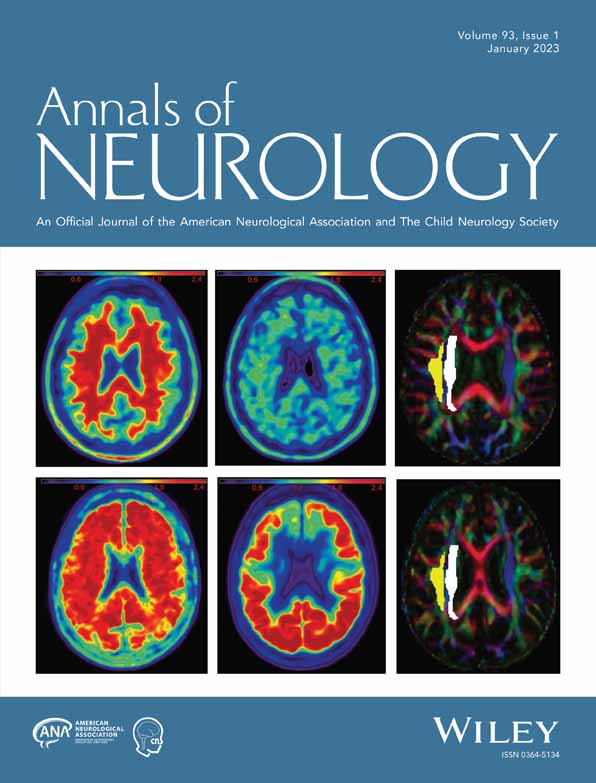Olfactory Neuron Prokineticin-2 as a Potential Target in Parkinson's Disease
Daniela Maftei equally contributed to this work and should be considered co-first authors.
Cinzia Severini and Nicola B. Mercuri equally contributed to this work and should be considered as co-last authors.
Abstract
Objective
The objective of this study was to outline the dynamics of prokineticin-2 pathway in relation to clinical-pathological features of Parkinson's disease by examining olfactory neurons of patients.
Methods
Thirty-eight patients (26 de novo, newly diagnosed) and 31 sex/age-matched healthy controls underwent noninvasive mucosa brushing for olfactory neurons collection, and standard clinical assessment. Gene expression levels of prokineticin-2, prokineticin-2 receptors type 1 and 2, and prokineticin-2-long peptide were measured in olfactory neurons by real-time polymerase chain reaction (PCR); moreover, the prokineticin-2 protein and α-synuclein species (total and oligomeric) were quantified by immunofluorescence staining.
Results
Prokineticin-2 expression was significantly increased in Parkinson's disease. De novo patients had higher prokineticin-2 levels, directly correlated with Movement Disorder Society-Sponsored Revision of the Unified Parkinson Disease Rating Scale (MDS-UPDRS) part III motor score. In addition, oligomeric α-synuclein was higher in Parkinson's disease and directly correlated with prokineticin-2 protein levels. Total α-synuclein did not differ between patients and controls.
Interpretation
Prokineticin-2 is a chemokine showing neuroprotective effects in experimental models of Parkinson's disease, but translational proof of its role in patients is still lacking. Here, we used olfactory neurons as the ideal tissue to analyze molecular stages of neurodegeneration in vivo, providing unprecedented evidence that the prokineticin-2 pathway is activated in patients with Parkinson's disease. Specifically, prokineticin-2 expression in olfactory neurons was higher at early disease stages, proportional to motor severity, and associated with oligomeric α-synuclein accumulation. These data, consistently with preclinical findings, support prokineticin-2 as a candidate target in Parkinson's disease, and validate reliability of olfactory neurons to reflect pathological changes of the disease. ANN NEUROL 2023;93:196–204
Conflicts of Interest
The authors report no competing interests.
Open Research
Data availability
Data are available from authors upon reasonable request.




